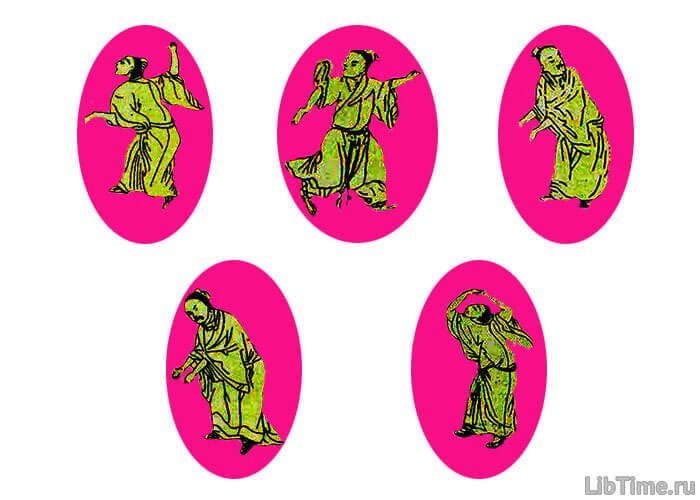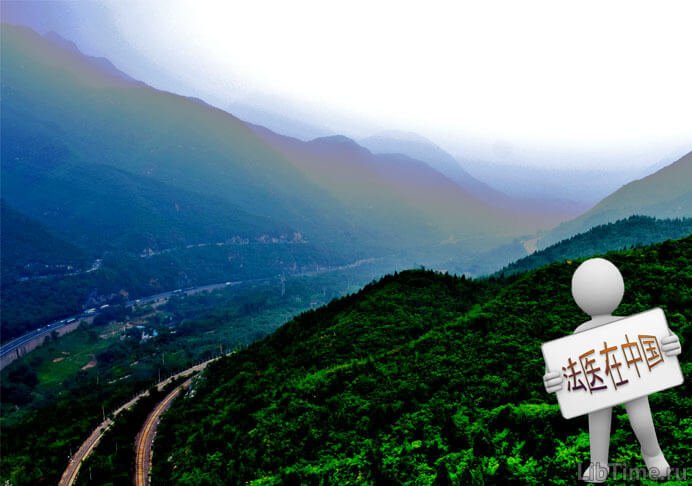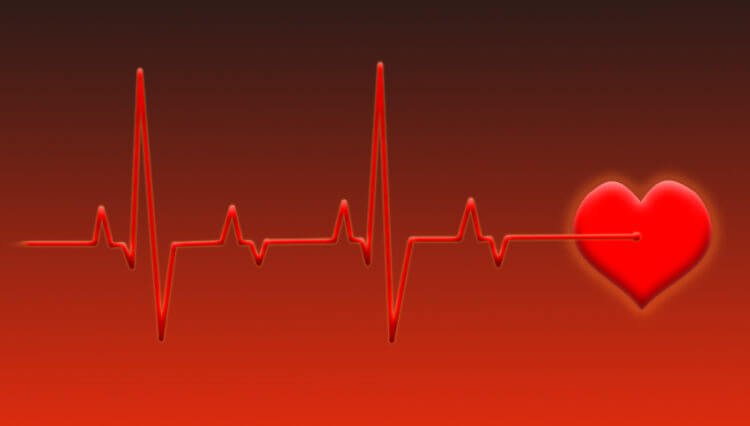Acupuncture in Chinese medicine. Zhenqiu therapy
Acupuncture in Chinese medicine occupies a special place and represents one of the most interesting, original and very effective therapeutic methods. The Chinese name of this method is zhenqiutherapy - acupuncture and moxibustion.
Historical information about acupuncture
The origins of this method are in the gray depths of centuries. In the most ancient historiographical records there is a legend that the first needles were made by Fushi, who lived in the middle of the third, and according to other legends - in the middle of the fourth millennium BC. Indirect confirmation of these data can be found archaeologists stone and belonging to a later period of bone needles for acupuncture.
And bronze culture was established in China in the 20th-18th centuries BC. The more reliable literary data on zhenqiu therapy dates back to 581 B.C. (it is contained in the book "Jiu Zhuan").
The most ancient medical book is the Huangdi Neijing
In the most ancient classical medical work "Huangdi Neijing" - this real summary of centuries-old experience of folk medicine, its canon - acupuncture and moxibustion are allocated in a separate large section with a description of indications for their use in various diseases.
Written more than two millennia ago, this book shows that even then Chinese physicians had already identified several hundred specific points on the surface of the human body ("points of irritation", "vital points", "seats of disease").
Experimentally, purely empirically, once noticed and then centuries of testing, physicians have established that through irritation of these points can be obtained in some diseases therapeutic effect. This truly remarkable discovery has been successfully used to treat a number of diseases.
Huang Fu-mi's book Tia and Ting
There are many facts about the extreme popularity of zhenqiu therapy back in very distant times. Thus, the book "Tia and Ting" by Huang Fu-mi, specially devoted to this method, which served as a manual for folk physicians for many centuries, reached Japan in 265 AD, where acupuncture and moxibustion also achieved significant development later on.
A mannequin with holes for inserting needles
In 1026 AD, the physician Wang Wei-yi made a bronze mannequin with holes for inserting needles and cauterizing in specific places. On this figure, Wang Wei-yi arranged 12 lines on its surface, according to the 12 groups of body organs known at that time.
Wang Wei-yi also created the "Atlas of Bronze Man", which detailed the ways of finding points for acupuncture and cauterization on the human body.
There are over 600 holes on these lines. The bronze mannequin, which is still kept in the Nanjing History Museum, is a kind of visual and teaching aid. After a long training (up to 7 years) in acupuncture, it was used to conduct examinations for specialists in this field of medicine.
For this purpose, the mannequin (it was hollow inside) was filled with a liquid colored in red and pasted with white paper on the outside. The test subject was offered to make injections in those places where it was required for the corresponding diseases. The correctness of his actions was controlled by the colored liquid protruding on the surface.
What can we say: not bad for the time, which is more than 7 centuries away from ours! Let us only add that the Nanking mannequin is made according to an even older model.
The essence of zhenqiu therapy
What is the essence of zhenqiu therapy. Its main purpose is to apply with therapeutic purpose of different strength, nature and time irritation in strictly defined points located on the skin of the torso, limbs, head, face - ie, almost the entire body.
The irritation is made by pricking with a thin metal needle ("zhen" - acupuncture), and then made by cauterization with a smoldering candle of wormwood leaves rolled like a cigar ("tsyu" - cauterization).
At first, these were two separate methods, merged into a single complex around the 5th century B.C. And this merger can not be called accidental. After all, both methods have common empirically established patterns, a single system of points, the total number of which reaches 693. Already this number speaks of the great observation and remarkable skill of the Chinese medics of the past.
The most frequently used points
Themost frequently used points are about 100. According to the breadth of indications and frequency of application in the most common diseases, these points are divided into:
- important-64 points;
- more important-14 points;
- the most important - 22 points.
The location of many points used for influence on certain internal organs and vessels is to a great extent similar to the localization of spinal and vegetative centers of innervation of these organs, i.e. these points have a certain anatomo-physiological connection with them.
As for the other points, the study and establishment of anatomo-physio-logical parallels between their topography and modern data on the spinal and vegetative innervation of internal organs and the vascular system should still be verified. This, in fact, is the main task of the theoretical and truly scientific substantiation of the zhenqiu method.
Principle of acupuncture and moxibustion treatment
Acupuncture and moxibustion treatment consists in irritating various parts of the skin and body tissues in such a way that the nervous system is affected in such a way that it is forced to fulfill its regulatory and protective functions.
According to the principles of zhenqiu, irritation of any one area (point) of the human body can lead to the cure not only one disease, but also diseases of other organs that have a connection with the nerve fibers located in the pricked or cauterized place. That is why through irritation of a certain area of the hand can be, for example, calm and toothache, and pain in the abdomen.
By irritating a certain part of the leg, certain stomach diseases can be treated and lower back pain can be eliminated, etc., (more information: Acupuncture points in Chinese medicine). Moreover, it is often possible to cure diseases of diametrically opposite nature with exactly the same injections and cauterizations.
For example, injections made in the same point can cause, if necessary, both increase sweating and stop it. The same can be said for stimulating urination or treating urinary incontinence. And here is another very interesting fact noted by modern Chinese scientists.
They found that under the influence of acupuncture is often observed in some diseases changes in the quantitative content of leukocytes in the blood - both in the direction of increasing their number, and reducing.
It is evident from the above that when applying the method of acupuncture and moxibustion, the main attention is paid not to the direct treatment of a particular diseased organ, vessels, tissue, but to the stimulation of their activity by positive irritations of the nervous system. In this sense, Chinese physicians adhere to a point of view that is radically different from the position of Japanese specialists in zhentsyutherapy.
The latter recognize only an injection in the area of localization of the pathological process, which comes from their underestimation and even denial of the regulating function of the nervous system.
Therapeutic effect of the application of Zhenqiu therapy
A few words about the therapeutic effect of the application of zhenqyutherapy. Chinese medical literature provides a lot of data showing that Zhentsyutherapy has proved itself in the treatment of many completely different diseases.
For example, according to Dr. Zhin Shi-chjun, out of 98 children treated in one of the pediatric clinics in Beijing from paralysis due to poliomyelitis, cure was established in 27, a clear improvement in 41, improvement - in 28, no effect in 2 patients. Most of the treated (83) entered the clinic earlier than a year after the onset of paralysis.
Very interesting are the data collected on the basis of studies of 2333 patients from the province of Hebei. Of the total number of patients treated with Zhenqiutherapy, 483 (20.5%) were cured, significant improvement occurred in 680 (29.2%), improvement - in 976 (41.8%), no change - in 95 (8.5%). Thus, positive results were obtained in 91.5% of cases.
Stimulating and regulating the function of the nervous system, zhenqiu - and this should be especially emphasized - does not have a harmful effect, does not worsen the patient's condition, which is sometimes observed when using various potent drugs. On the contrary, according to Chinese specialists, this method of treatment almost always leads to a significant improvement in the general condition.
Of course, traumatic bone fractures are not cured with zhenqiu, but the use of acupuncture in this case, acupuncture cancels pain and has a strengthening effect on the body.
Indications and contraindications of zhenqiu therapy
The question of indications and contraindications of z henqiu therapy should be resolved in this direction: can zhenqiu lead to complete cure, can it play a major role in the treatment? Based on the analysis of their clinical observations, modern Chinese medical practitioners draw the following conclusions:
- Zhenqiu can give complete cure in some diseases, both functional and organic. At the same time, the sooner one starts treatment, the greater is the effect of Zhenqiu application. And vice versa, the later they start treatment of the disease, the lesser the results.
- A number of diseases cannot be treated with the help of Zhenqiu method alone. These include, for example, anemia after acute blood loss, worm infestations, severe alimentary dystrophy, as well as some other diseases in which zhenqiu effective only in combination with other methods.
- In diseases where major surgical intervention is indicated, zhenqiu is contraindicated (acute appendicitis, bleeding in peptic ulcer disease, abnormal labor).
- Zhenqiu therapy can serve as the main or auxiliary treatment for some acute infectious and non-infectious diseases. However, this issue has not yet been sufficiently studied.
- When specific remedies or other treatments are available, acupuncture is not used for some acute, particularly infectious diseases. When these diseases do not have other therapeutic means, zhenqiu can be used for symptomatic treatment.
At present, the question of indications and contraindications to the use of zhentsyuterapii has not yet received a final resolution, as the mechanism of action can not yet be considered sufficiently studied.
Treatment of malaria acupuncture
With the help of acupuncture in China treat malaria. This is evidenced by the vast experience of folk doctors. Many representatives of Western medicine are distrustful of these facts, rejecting the possibility of affecting the plasmodium by acupuncture and cauterizing certain points.
By treating malaria with zhenqiu in cases where the diagnosis was confirmed by blood tests, it was found that some time after the start of treatment, most of the patients recovered. For confirmation, their blood was re-examined; the analysis showed the absence of malaria plasmodium.
To check the long-term results of treatment with zhenqyutherapy, the patients remained under observation for a long time. However, and subsequent studies found cure of malaria patients; tests showed the absence of plasmodium in their blood.
The general conclusions that can be drawn from the data of modern Chinese authors are summarized as follows:
- for all its positive aspects, the method of zhenqiu should not be considered universal;
- in some diseases it is not indicated, and in others it can be used only as an auxiliary means;
- according to available observations, the use of zhenqiu and in non-indicated cases does not cause negative side effects;
- The issues of indications and contraindications are not sufficiently studied, which necessitates their further clarification by the combined efforts of folk doctors and representatives of European medicine.
The establishment of special research institutes, the introduction of teaching the method of zhenqiu in all Chinese medical schools and a number of other measures create all the prerequisites for the successful resolution of all theoretical and practical problems associated with zhenqiu therapy.
Popularity of the acupuncture method
Themethod of acupuncture has already in ancient times gained such popularity in China that other countries became interested in it. In 265 AD the book "Tia Yi Ting" written by Huang Fu-mi was brought to Japan and recognized as a classic guide to this method of therapy.
From this date, Japanese physicians trace the history of application on their islands of zhenqiu, which they use to this day, diverging, however, with the Chinese, as already mentioned, in a number of theoretical issues. Around the middle of the last century, Chinese experts in zhenqiu began to appear in Western Europe and America.
Now this method is already quite widely known and applied in Italy, France, the USA and other countries. Being known in our country for about 150 years, the method of zhenqiu began to be deeply studied by our specialists only recently. In 1955, the Soviet-Chinese Commission for Scientific and Technical Cooperation adopted a special decision.
It was envisaged that medical teams would travel to China to study the method of acupuncture and moxibustion on site. The results of these trips were widely publicized in special publications and in the press. Scientific Council of the Ministry of Health of the USSR July 11, 1957 adopted guidelines, according to which zhentsyutherapy is indicated in:
- Functional diseases a) cardiovascular system (first degree hypertension, angina pectoris, angiospasms); b) gastrointestinal tract (with spastic, atonic disorders and pain syndromes); c) genitourinary system (nocturnal urinary incontinence, itching of external genitalia, pain syndromes); d) endocrine system (mild hyperthyroidism, menopausal state).
- Vasomotor-allergic conditions (bronchial asthma, migraine, urticaria, vasomotor rhinitis, angioneurotic edema, Meneer's syndrome).
- Neuroses (psychasthenia, hysteria).
- Diseases of the peripheral nervous system with disorders of sensation and movement (trigeminal neuralgia, plexitis, radiculitis, neuritis of various origins, peripheral paralysis of the facial nerve).
- Diseases of muscles and joints of metabolic and rheumatic nature.
- Some diseases of the central nervous system with impaired motor and sensory functions: a) residual effects of poliomyelitis; b) diencephalitic syndromes; c) dynamic disorders of cerebral circulation; d) hyperkinesias, tics, seizures of functional and organic origin.
In the future, the Chinese method of acupuncture is being studied and improved by the medicine of all countries.


